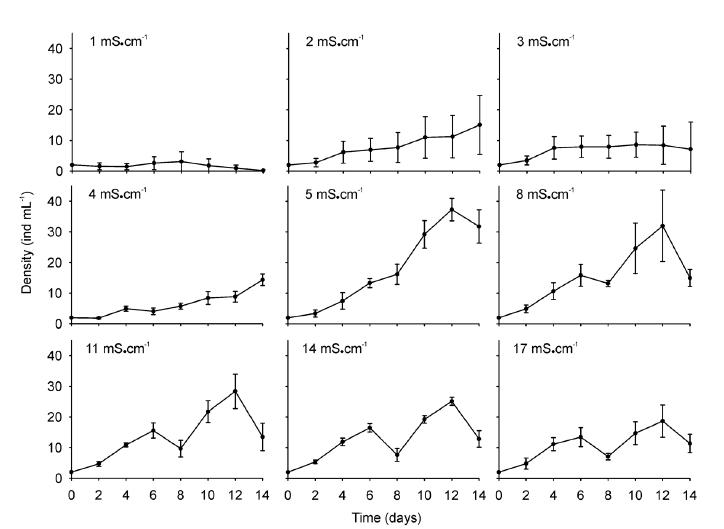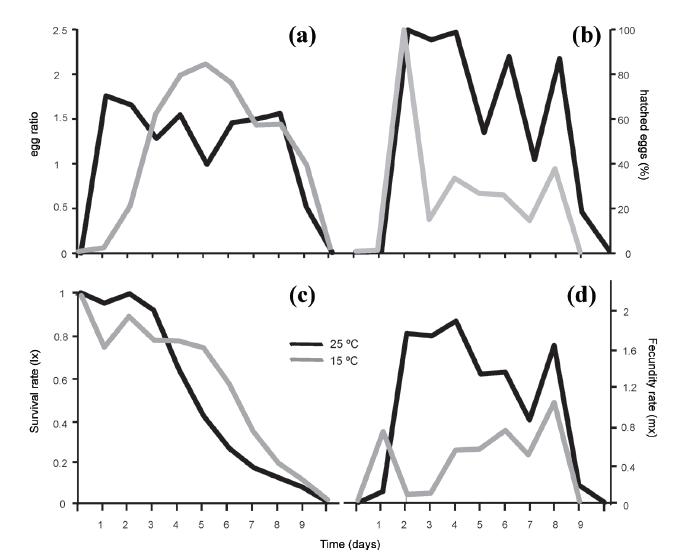ABSTRACT
In the present work, we provide the first approach about the life-history of Brachionus plicatilis in South America. We tested with laboratory experiments the response of the pampean strain of B. plicatilis for two of its main stressors (conductivity and temperature). We evaluated the effects of eight conductivity values from 1 to 17 mS.cm-1 and two temperatures (15 and 25 °C) to compare its abundance with those obtained in the pampean lotic and lentic environments, where this rotifer is frequent or dominant. The results demonstrated that the increase in population-growth rate and the peak of abundance occurred at the highest temperature and at medium conductivity. Minimum values were obtained at the lowest temperature and conductivities analyzed, but the final density attained was nevertheless similar to those recorded in the pampean environments at the optimum conductivity and during the spring and summer seasons. Males, mictic females, and resting eggs were observed at the minimum and maximum conductivities, revealing the strategy of this species for maintaining dominance in environments with fluctuating salinity. The experiments also indicated the possible behavior of this relevant member of the zooplankton community within a scenario of increasing temperature and salinity related to the climate changes occurring in the pampean region.
Key words:
euryhaline rotifer; experimental cultures; growth rate; salinity; temperature





